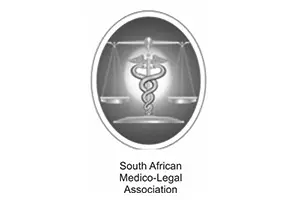Medical Negligence – Nature of Causation, Damages and Compensation
In South Africa, liability for professional medical negligence, in its civil law context, is primarily rooted in the Law of Obligations (translating into the Law of Contract and the Law of Delict (Tort). As a result, it is trite law that all compensation for medical negligence (inclusive of medical error and any adverse event) is based on fault (in the form of culpa). Thus, generally speaking, a physician’s negligence is legally assessed with reference to the yardstick of the “reasonable expert in the same circumstances.” In any given context, negligence means that the defendant failed to foresee the possibility of harm (bodily or mental injury or death) occurring to another in circumstances where the reasonable person (diligens paterfamilias) in the defendant’s position would have foreseen the possibility of harm occurring to another and would have taken steps to avoid or prevent it. The plaintiff thus has the burden of proving, on a balance of probabilities, that the defendant caused or contributed to the injury, and such harm was foreseeable and thus preventable.
Causation is the relationship that must be found to exist between the tortuous act of a defendant and the injury to the plaintiff in order to justify compensation for the latter out of pocket expenses. Legal theory requires that the plaintiff prove the link between a breach in standard of care, and damages resulting from the breach.
In Muller v. Mutual and Federal Insurance Co. Ltd 1994 (2) SA 425 (C), the court observed:
“[T]he problem of causation in delict involves two distinct enquiries. The first is whether the defendant’s wrongful act was a cause of the plaintiff’s loss (“factual causation”); the second is whether the wrongful act is linked sufficiently closely to the loss for legal liability to ensue (“legal causation” or remoteness)”.
Therefore the test for factual causation is, except in the most unusual of circumstances, the causa (conditio) sine qua non. The plaintiff must show that the harm would not have arisen but for the actions or omissions of the defendant. Failing to address factual causation through adequate expert evidence can be fatal in a medical negligence case. Recent case law has seen the plaintiff fail in circumstances where there is a strong case on breach of duty of care, but the plaintiff has not directed their experts to properly consider and explain why the negligence is a necessary condition of the harm suffered (as opposed to merely supporting the contention that the negligence increased the risk of the harm occurring). Various tests for legal causation have been suggested, but the Appellate Division has opted for a flexible umbrella criterion, which determines the closeness of the link according to what is fair and reasonable and just. Here are a few relevant questions:
- Is the factual link strong enough?
- Is the harm sufficiently closely connected to the conduct?
Should the law confirm that the defendant caused the harm, or should liability be limited?
The courts decide the question of legal causation on the basis of a number of factors that relate essentially to public policy. Public policy is informed by the values and principles of the Constitution.
Once factual and legal causation has been established, the patient-plaintiff may rely on both a breach of contract and delict in the same proceeding. Only pecuniary (patrimonial damages) may be recovered in contract, while pecuniary and non-pecuniary (non-patrimonial) damages can be recovered in delict. Recoverable pecuniary damages include medical costs (past as well as future), loss of income (past and future earnings). The ambit for recoverable non-pecuniary damages include not only compensation for actual physical pain, but also shock, discomfort and mental suffering, disfigurement, loss of amenities of life and disability, and loss of and loss of expectation of life—conveniently called loss for “pain and suffering which embraces all these non-pecuniary misfortunes, past and future. Pecuniary loss and non-pecuniary loss is simply a matter of proof on a preponderance of probabilities and in most instances the services of actuaries are called in to quantify/calculate the pecuniary loss suffered by the patient-plaintiff, taking into account the inflation rate (in terms of loss of future earnings), depreciation, life expectancy, retirement age, etc.The calculation of non-pecuniary damages is more complex and controversial and in this regard courts are in principle guided by policy considerations and comparable precedent.
The current position on objections to the con/arb process
Con/arb process - The Commission for Conciliation, Mediation[...]
Out of time? Think again – The CCMA and its rules
By Lara Keil (Candidate Legal Practitioner) under the[...]
RAF’s lodgement requirements: Claimants further prejudiced
By Lara Keil (Candidate Legal Practitioner) under[...]













